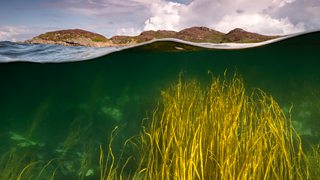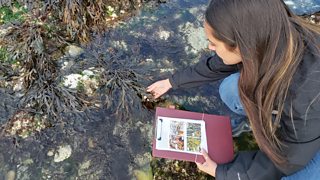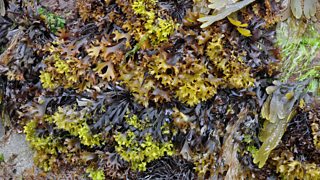Spotting seaweed by the seaside
Marine Conservation Society (MCS)
Partner organisation of the Watches
By Kate Whitton at the Marine Conservation Society

Thongweed by Mark Kirkland, MCS
Did you know there are over 650 species of seaweed found around the UK? From dabberlocks to bladder wrack and sugar kelp, each seaweed plays a vital role in supporting the health of our ocean.
The Marine Conservation Society’s Big Seaweed Search, in partnership with the Natural History Museum, asks beachgoers to identify 14 of the most common types of seaweed found on the UK coast.
The goal of the Big Seaweed Search is to learn about some of the key seaweed species found in UK waters, record where they are and find out how their distribution is changing over time. Anyone visiting the coast can lend a hand and help us gather this vital information!

Why are seaweeds important?
Why do we want to know so much about seaweeds? Not only are seaweeds a great source of nutrients and energy for animals such as crabs and sea urchins, they are critical habitats for other species, acting as places where small or young fish and crustaceans can take cover from predators. By breaking the force of the waves, kelp forests also help to reduce coastal erosion. Seaweeds, such as kelp, are also vital tools in fighting the climate crisis, helping to store carbon in the seabed.
As climate change is affecting our marine environment, we are seeing sea temperature increases, sea level rise and ocean acidification. These changes alter the distribution of different seaweed species. By mapping where different seaweed species are, we can measure the impact of environmental changes.

Image by Richard Harrington
How to identify seaweeds
Some of the most common and best known seaweeds are the brown seaweeds: bladder wrack, with distinctive air-filled bladders and spiral wrack, which often has a spiral twist. Also common and easily identified is kelp, which forms thick strands of leathery brown leaves. Kelps are cold water species found all around the UK (and in many other parts of the world), though in particularly large quantities around the coast of Scotland.
For those taking part in the Big Seaweed Search, the Natural History Museum and Marine Conservation Society have developed a , highlighting key features of the different seaweeds you’re likely to spot.

How to get involved
The explains what you need to do, and provides photos to help you identify each of the seaweeds we’re focussing on. You can complete the simple survey on a mobile, tablet or computer.
The survey can be carried out at any time of year and as an individual or in groups – it's up to you.
- Register to take part and download your guide and recording form at
- Choose your 5 m of coastline to survey
- Fill in your survey form
- Take LOTS of clear, close-up photographs for your survey to be accepted
- Submit your survey through
- Don’t forget to upload your photographs when you submit your survey
